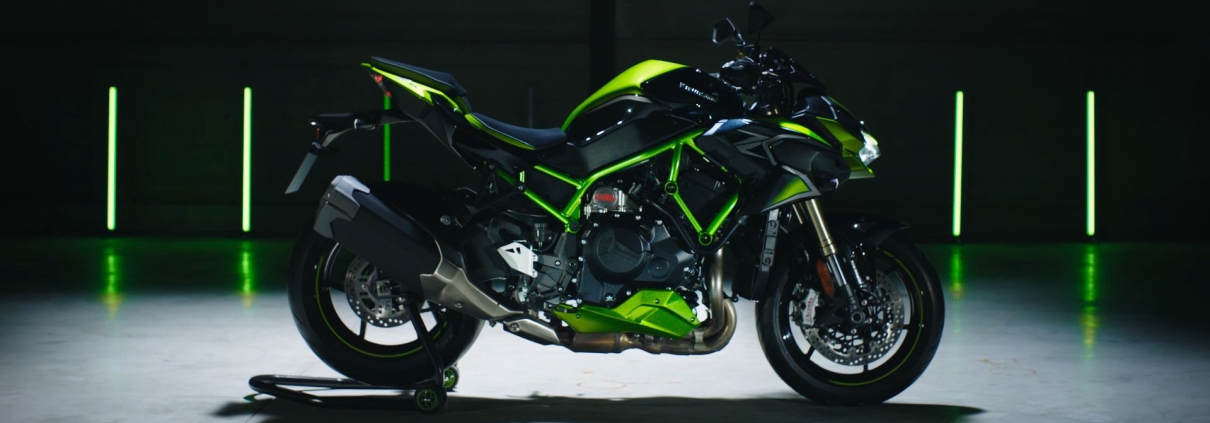Kawasaki Motorcycle Battery Replacement: How to Choose and Upgrade Your Starter Battery
Introduction
Replacing your motorcycle battery is an essential maintenance task for every Kawasaki rider. Whether you own a Ninja, Z, Versys, or Vulcan, understanding when and how to replace your battery can save you from unexpected breakdowns and improve your bike’s performance. While lead-acid batteries remain common, lithium starter batteries are increasingly popular due to their longer lifespan, lighter weight, and faster charging capabilities.
This guide provides a complete overview of Kawasaki motorcycle battery replacement, including signs you need a new battery, how to choose the right replacement, step-by-step replacement instructions, and the benefits of upgrading to lithium.
Signs Your Kawasaki Battery Needs Replacement
Knowing when to replace your battery can prevent inconvenient roadside failures. Common signs include:
- Difficulty starting the engine: Slow cranking or no response can indicate a weakened battery.
- Dim headlights or electronics: If your lights are noticeably dim, your battery may not be holding charge efficiently.
- Long periods of inactivity: A battery that cannot start the bike after weeks of non-use may need replacement.
- Physical damage or leakage: Swelling, cracks, or electrolyte leakage are clear indicators that a replacement is necessary.
Typical Replacement Cycle: For most Kawasaki motorcycles, batteries last approximately 2–3 years, depending on usage, storage conditions, and environmental factors.
Choosing the Right Replacement Battery for Kawasaki
Selecting the right battery involves more than just matching voltage. Key considerations include battery type, rider needs, and compatibility with your Kawasaki model.
Battery Types
- Flooded Lead-Acid: Traditional, cost-effective, widely available. Requires occasional maintenance.
- AGM / EFB: Absorbent Glass Mat and Enhanced Flooded Batteries support start-stop systems and offer better performance than standard lead-acid batteries.
- Lithium-ion (LiFePO4): Lightweight, maintenance-free, longer cycle life, and fast-charging capabilities. Increasingly adopted for high-performance motorcycles and long-term reliability.
Rider Scenarios and Recommendations
- Daily commuting: Standard lead-acid batteries suffice for short, regular rides.
- Performance enthusiasts or long-distance riders: Lithium batteries reduce weight, support fast starts, and minimize downtime.
- B2B perspective: Dealers and service shops can optimize inventory by stocking lithium batteries for Kawasaki models with higher replacement frequency or customer demand for performance upgrades.
Natural Product Integration:
For riders looking for a versatile upgrade, our 12V motorcycle lithium starter battery fits most Kawasaki models and offers longer life, lighter weight, and fast charging—ideal for daily commuters and performance enthusiasts alike.
Step-by-Step Replacement Guide
Replacing a Kawasaki motorcycle battery is straightforward if you follow safety and procedural steps:
- Prepare tools: Screwdrivers, wrenches, and protective gloves.
- Turn off the ignition and remove the seat or side panel to access the battery.
- Disconnect terminals: Always remove the negative (black) terminal first, then the positive (red) terminal.
- Remove the old battery and inspect the battery tray for corrosion or damage.
- Install the new battery: Place it securely in the tray, connect the positive terminal first, then the negative.
- Test the bike: Start the engine to ensure proper installation.
Pro Tip: For lithium batteries, use a compatible charger and avoid connecting to standard lead-acid chargers to prevent damage.
Advantages of Lithium Starter Batteries
Lithium starter batteries offer several benefits over traditional lead-acid alternatives:
- Lightweight: Typically one-third the weight of a lead-acid battery, improving bike handling.
- Extended lifespan: Up to 3–5 times the cycle life of lead-acid, reducing replacement frequency.
- Fast charging: Recharge quickly between rides, minimizing downtime.
- Low self-discharge: Retains charge during long periods of inactivity.
- Environmentally friendly: No lead pollution, aligning with sustainable practices.
- Lower total cost of ownership: Higher upfront cost offset by reduced replacements and maintenance.
From a B2B perspective, stocking lithium starter batteries can also help service shops and fleet operators reduce operational costs and enhance customer satisfaction.
Maintenance Tips to Extend Battery Life
Regardless of battery type, proper maintenance ensures optimal performance:
- Regular riding: Keeps batteries charged and prevents sulfation in lead-acid types.
- Use a maintenance charger for long-term storage: Especially important for lithium batteries during extended inactivity.
- Keep terminals clean and corrosion-free: Ensure secure connections.
- Select compatible chargers: Lithium batteries require chargers specifically designed for LiFePO4 chemistry.
When to Upgrade: Related Resource
For riders who modify their bikes or want to know the optimal time to upgrade their starter battery, you can refer to our detailed guide: When Should You Upgrade Your Motorcycle Starter Battery. This article provides insights into identifying the best upgrade timing based on usage patterns and performance requirements.
Conclusion
Replacing the battery in your Kawasaki motorcycle is not just about maintaining functionality; it’s an opportunity to enhance performance, reliability, and long-term value. While lead-acid batteries remain widely used, lithium starter batteries are becoming an increasingly popular alternative due to their weight advantage, longer lifespan, fast charging, and environmental benefits.
Choosing the right battery—considering your riding habits, Kawasaki model, and maintenance preferences—can prevent unexpected downtime and improve your overall riding experience. For riders seeking a versatile, high-performance option, lithium batteries represent a smart and sustainable upgrade.
Explore our 12V motorcycle lithium starter battery for a reliable upgrade compatible with most Kawasaki motorcycles, designed for long life, lighter weight, and fast charging.


